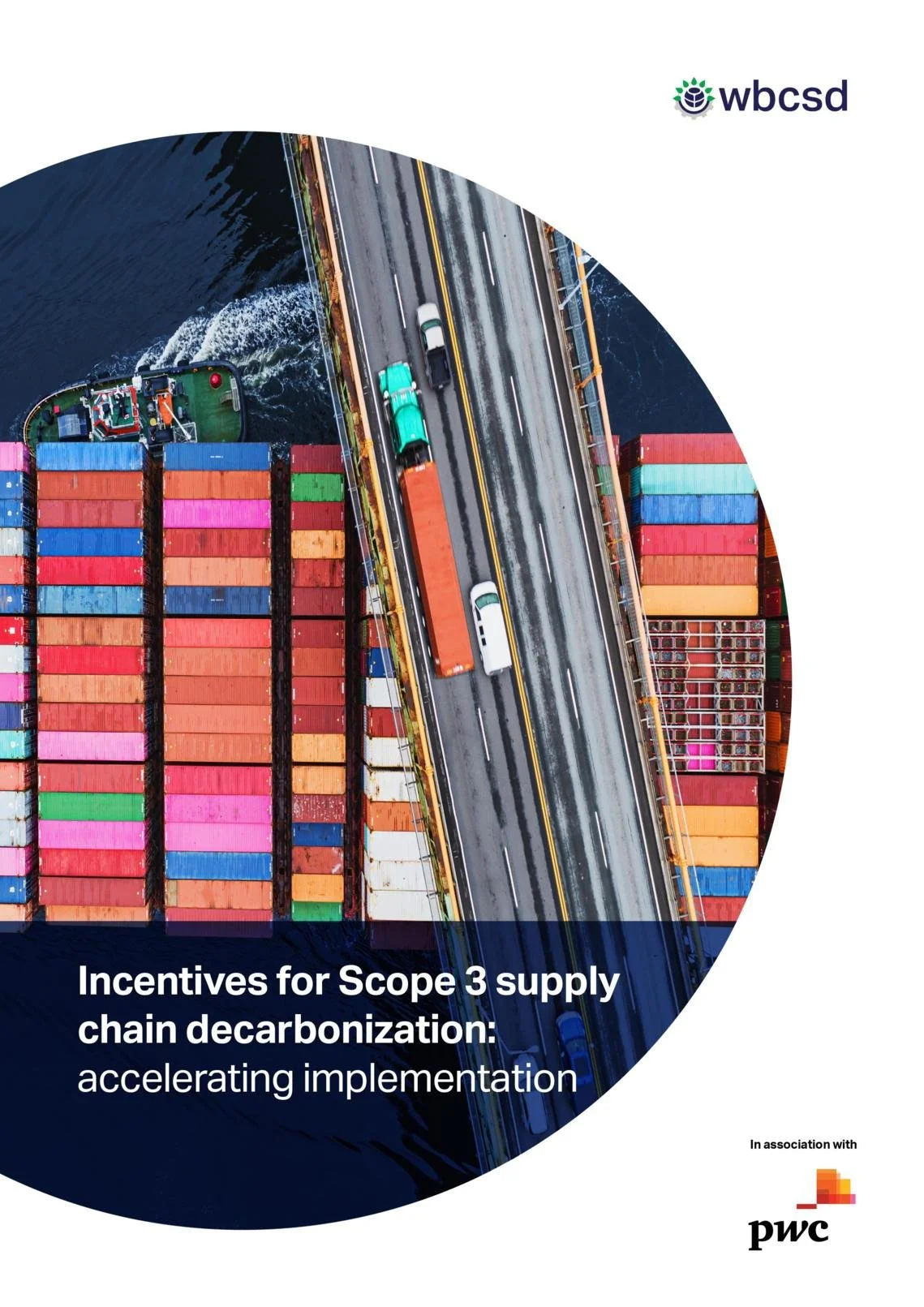When I saw a new report about reducing supply chain emissions, issued by the World Business Council for Sustainable Development (WBCSD) and professional services firm PWC, I was sceptical. The cynic in me says that big consulting firms are all jumping on the sustainability bandwagon, after decades of helping companies sell more stuff, extract more oil and coal, and generally burn more carbon. However, having read the report, I admit that I was wrong.
The report is titled “Incentives for Scope 3 supply chain decarbonization: accelerating implementation”. It aims to lay out practical ways in which organisations can use procurement to drive carbon reduction in their supply chains. I started reading expecting that there would be a lot about collecting data and less about real action that can be taken. But it is actually a very good and useful report.
Indeed, it is the first time I have seen a detailed list of possible actions laid out so clearly. I have personally produced some high-level thinking around this topic for both for the Procurement with Purpose book and more recently in some conference presentations, but this report takes it further than I have to date in terms of the detail.
The initial content looks at how to build an approach to reducing Scope 3 emissions. Gaining visibility and appropriate supply chain transparency, understanding your supply chain carbon “footprint”, then baselining and setting targets is all good if fairly obvious stuff. The report then gets into more interesting areas as it looks at how to “assess the available decarbonization levers”. There are 14 of these levers – different procurement and supplier management techniques, you could call them.
They are of course then organised into a nice four box model of course (we are talking about a consulting firm being involved here…) One axis represents financial to non-financial measures, the other with reward and penalty at the extremes. So the four quadrants are:
· Building capability
· Leveraging procurement
· Rewarding progress
· Enforcing performance
“Penalty” is maybe not quite the right word here – for instance, “decarbonization criteria in procurement” falls into the nonfinancial / penalty quadrant. I don’t think most suppliers would see that technique as being particularly penalising. But that is a small complaint, as generally the 14 measures are well-thought out.
The next section of the report looks at each of the levers and gives a brief “how and why” description. So under “Peer benchmarking”, one of the 14 techniques, the “How” is “A ranking or scoring system that collects and compares information across the supply chain”. The “Why” is “Shows suppliers how they perform in relation to their peers and encourages them to more rapidly decarbonize in order to remain competitive”.
There are examples of how you might apply the levers to different players in the supply chain, and then an interesting section based on how 20 members of the working group (members of WBCSD) rate the ease of implementing each measure and its potential impact. So “mandatory carbon reporting” is seen as pretty simple to implement and has strong impact. “Financial penalties” on the other hand are seen as the hardest to implement of the 14 and have only moderate impact.
We then move into a section looking at driving change internally – I think we will come back to that another day as there is quite a lot to unpack there. Finally, there are links to “deep dives” - further summary reports looking at half a dozen of the most important levers. (I haven’t looked at those yet).
All in all then, this is a very useful and recommended report. As well as PWC, the member firms involved include big names such as Bayer, Dow, Colgate, IBM, Philips, P&G and Unilever – so well done to them and their people who contributed.
However, I do feel there is one flaw in this work, and indeed in most of what I have seen written about Scope 3 and supply chain decarbonization generally. Stay tuned for more on that once I have got my thoughts in order and put something on paper!
